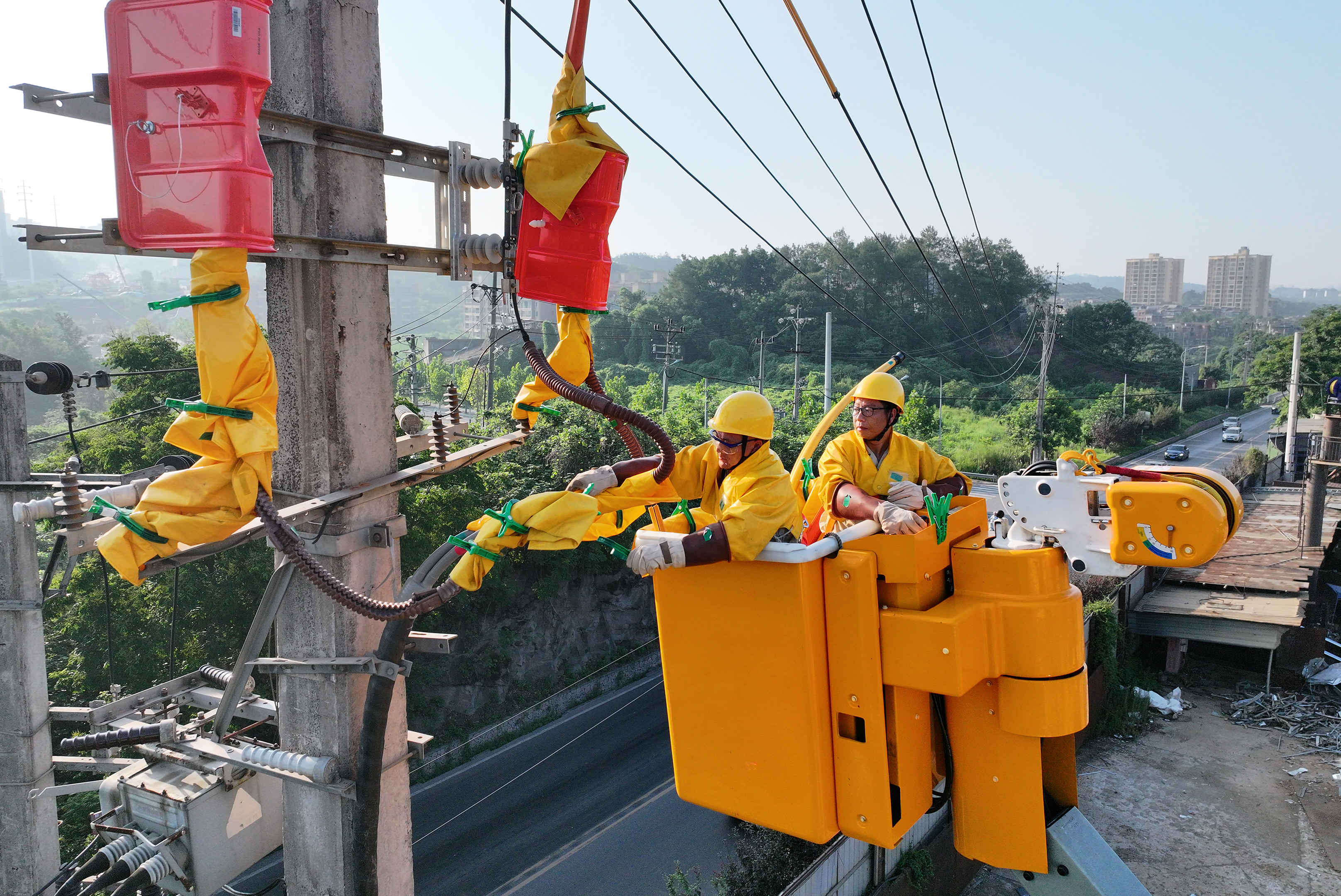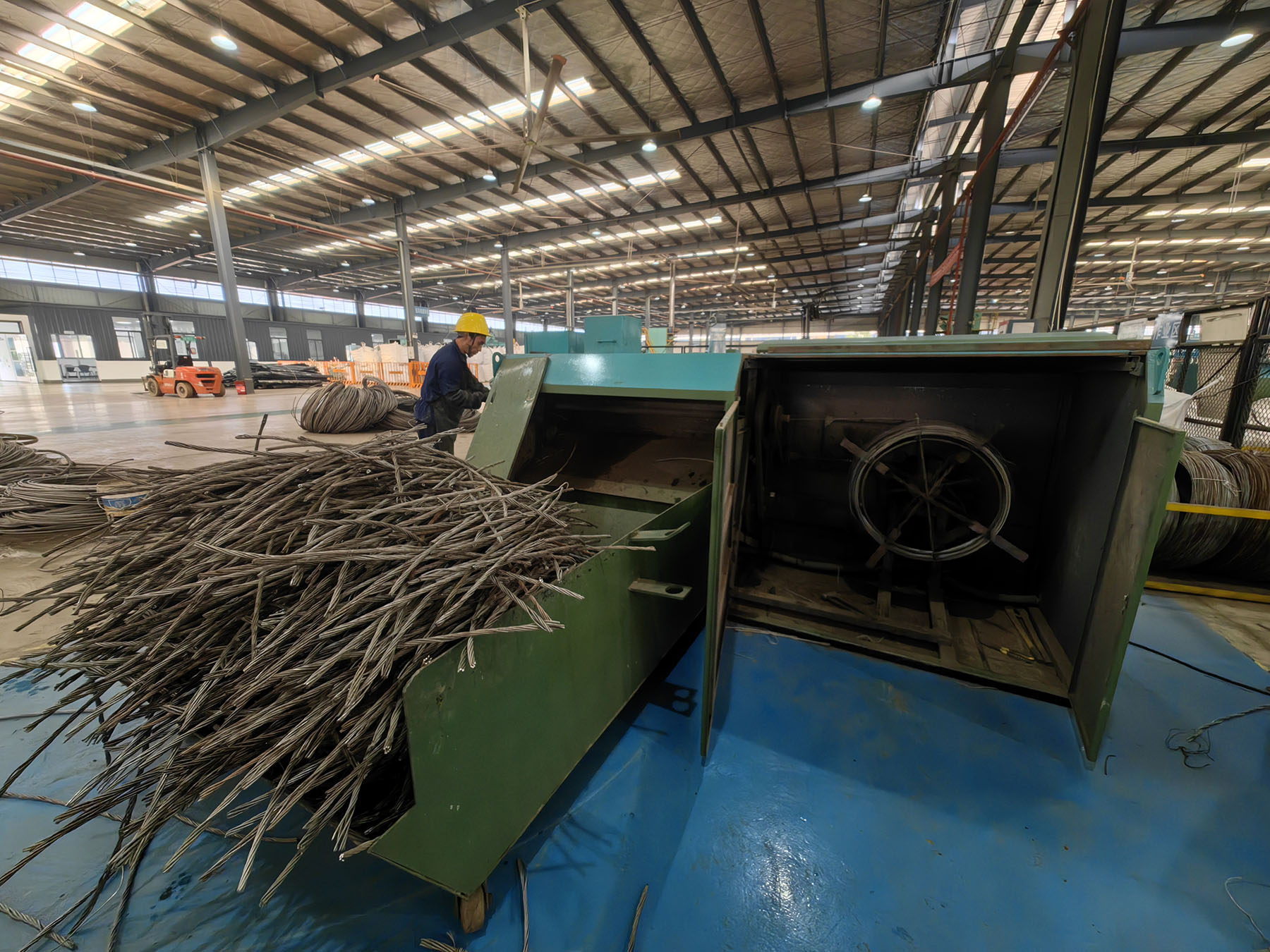Utility company's innovative solutions bring environmental, economic benefits, Hou Liqiang reports from Chongqing

Editor's note: China Daily is publishing a series illustrating the country's efforts to achieve its carbon peak and carbon neutrality goals.
At a nondescript industrial estate in Chongqing, Southwest China, transformers formerly used in the municipality's electricity grid are being dismantled piece by piece, recycled, and potentially hazardous waste is disposed in an environmentally friendly way.
Such has been the case since 2022, when State Grid Corporation of China, the world's largest utility enterprise, established the first of 14 recycling centers across the country to contribute to the national climate targets of peaking carbon dioxide emissions before 2030 and going carbon neutral before 2060.
The recycling of transformers is a tricky process as they contain hazardous waste oil and sulfur hexafluoride, or SF6, a potent greenhouse gas.
"Last year alone, roughly 5,000 transformers, collected all across Chongqing municipality, were dismantled. Their materials were specifically categorized for recycling here in Yongchuan district," said Yang Zhigang, a recycling technician at the center.
Yang, clearly proud of his work, gestured toward the dismantling facility and said, "The ground is immaculately clean, devoid of any grease or dirt."
He has every reason to be proud. The center, the first of its kind operated by State Grid, began from the ground up without any specialized equipment available for the disposal of transformers and other waste products from the power grid available on the market.
ALSO READ: Trade-in programs urge for effective recycling supply chain
The center provides a microcosm of how the power supply sector in China as a whole is promoting the recycling economy and contributing toward sustainability.
Transformer oil has high recycling value and can be used to produce lubricating oil. Previously, collectors had to individually go to different power stations with retired transformers to collect the oil, resulting in not only oil leakage but also SF6, Yang said.
The emission of 1 metric ton of SF6 is equivalent to the emission of over 20,000 tons of carbon dioxide. To date, the center, by comprehensively disposing of solid, liquid and gas waste, has reduced SF6 emissions by roughly 21 tons, it said.
The contributions of the center to reducing carbon emissions go far beyond that figure, Yang added.
Standing beside an automated machine for dismantling high-voltage electrical cables, he detailed how different parts of the line are classified and recycled. Thanks to centralized disposal efforts, many components of a cable, previously burnt to extract the copper within, can now be effectively recycled, he said.
The cable casing, for example, is purchased by a local company for approximately 2,000 yuan ($278.7) per ton to produce pelletized lubricants. Following the pelletization process, the material's value skyrockets to 15,000 yuan per ton.
The pelletized lubricants can be used to enhance the surface finish of cast parts for automobiles, achieving a mirror-like effect by improving their smoothness from 98 percent to 99.9 percent, Yang said. It can significantly extend the life span of automotive cylinders or structural components subject to constant friction.
"Through our practical experience, we have grasped that what we once considered garbage polluting the environment is, in fact, merely resources misplaced," he said. "It may come as a surprise to many that the waste once incinerated is now entirely recycled here."
This equipment is also capable of disassembling and categorizing steel and aluminum wires from within electric cables.
The aluminum within the cable lacks adequate strength, requiring the addition of steel wires to ensure secure suspension. To facilitate recycling, proper classification is essential. Otherwise, they will be refused by the recycling companies, he said.
He said the steel wires in the cable are corrosion-resistant and are highly welcomed by recycling companies as they are cheap and can be used to make a large variety of products, including nails, umbrellas, clothes hangers, shrimp and fish cages, as well as fencing.
The price of steel wires from the center only costs around 4,000 yuan per ton, compared to over 10,000 yuan per ton when they are new, he added.
According to Yang, since its commissioning in August 2022, the center has dismantled over 4,840 tons of electrical cables.

Wang Kaicai, director of the dismantling workshop, described the research and development process for the equipment that dismantles electric cable as akin to crossing a river by feeling the stones one step at a time.
Initially, the center adopted a process of crushing and then using a magnetic separator to extract the steel wires, he said. The center soon found, however, that no matter how strong the magnetic properties of the separator were, it could not successfully extract all the steel components from the crushed material, leading to impurities in the aluminum and rejection by recycling companies.
The center's current equipment was inspired by a device they came across on the popular short-video platform Douyin. This equipment utilizes a wire drawing method to extract steel wires. However, as more wires were drawn out, the device became increasingly heavy, posing a safety risk.
To address this issue, they enhanced the equipment by implementing a mechanism that automatically cuts off the steel wire once it reaches a specific length, effectively eliminating the safety hazard.
"We are constantly refining the devices we use as we put them to the test in production," Wang said.
The center has also attached great importance to energy-meter recycling, focusing on the development of advanced intelligent equipment for efficient dismantling processes, he added.
Although energy meters may look similar externally, they exhibit significant variations in internal structures, notably in the number of screws used, presenting a substantial hurdle to automated dismantling.
At the very beginning, the center hired workers to disassemble the meters using screwdrivers, but this approach proved to be highly inefficient, Wang recalled. Even with the introduction of pneumatic screwdrivers, the efficiency level remained unacceptably low.
At the end of last year, a pivotal moment unfolded as the collaborative endeavors of the center and a robotic arm manufacturer yielded results through integrating concurrent experimentation and design.
"Using a robotic arm acquired from the manufacturer, we jointly conducted experiments on more than 100 varieties of energy meters to explore potential solutions for enhancing efficiency in the manufacturer's workshop," he said.
Equipped with multiple electric screwdrivers that can operate concurrently, this robotic arm features an intelligent camera capable of automatically taking photos, identifying, matching models and carrying out tasks based on programmed instructions for different models.
"The robotic arm greatly enhanced the efficiency. It can dismantle an energy meter in just 30 seconds. Previously, a single worker could only dismantle about 100 in a day," Wang said.
In a statement from the center, it stressed the high environmental and economic benefits brought about by its recycling initiative.
It said the energy consumption for recycled aluminum is just 4.5 percent in comparison to primary aluminum. As for recycled copper, it only consumes a mere 18 percent of the energy needed for producing primary copper.
According to the center, in the first year of its operation, it processed 10,091 tons of solid waste, saving 38.77 million kilowatt-hours of energy, reducing carbon dioxide emissions by 86,500 tons, and generating an output value of 137 million yuan.
In the past, obsolete electrical equipment was primarily auctioned off to recycling companies, Wang said. The centralized processing at the center has resulted in a significant 30 percent boost in the value of the waste.
State Grid has set up similar recycling centers in provinces including Shandong, Jiangsu, Hubei and Henan.
Chen Shicai, an executive of a company specializing in collecting transformer oil for lubricating oil production, said the centers have created considerable environmental and economic value.
Before the center's establishment, his company, Chongqing Fengsheng Petrochemical Corporation, needed to sign recycling contracts with grassroots power supply companies and then collect waste oil only when it became available.
His company previously had to dispatch tanker trucks to collect small amounts of transformer oil. This usually led to substantial transportation expenses, especially considering that the transportation of the substance as a hazardous waste is tightly regulated, he said.
ALSO READ: China's EV battery recycling boom fuels green transition, taps global market
Chen said the abandoned transformers were typically kept outdoors, substantially heightening the likelihood of contaminants like sand infiltrating the transformer oil during the recovery process.
He added that the center has significantly boosted the annual amount of transformer oil his company can recover, scaling up from a mere 20 to 30 tons to an impressive 400 tons.
Despite having to purchase waste transformer oil from the center at elevated prices, the company has experienced a notable improvement in cost efficiency due to reduced transportation and purification expenses, as well as the increased scale of operations, Chen said.
"The reduced frequency of transportation has diminished the probability of environmental pollution incidents occurring during transit," he added.


